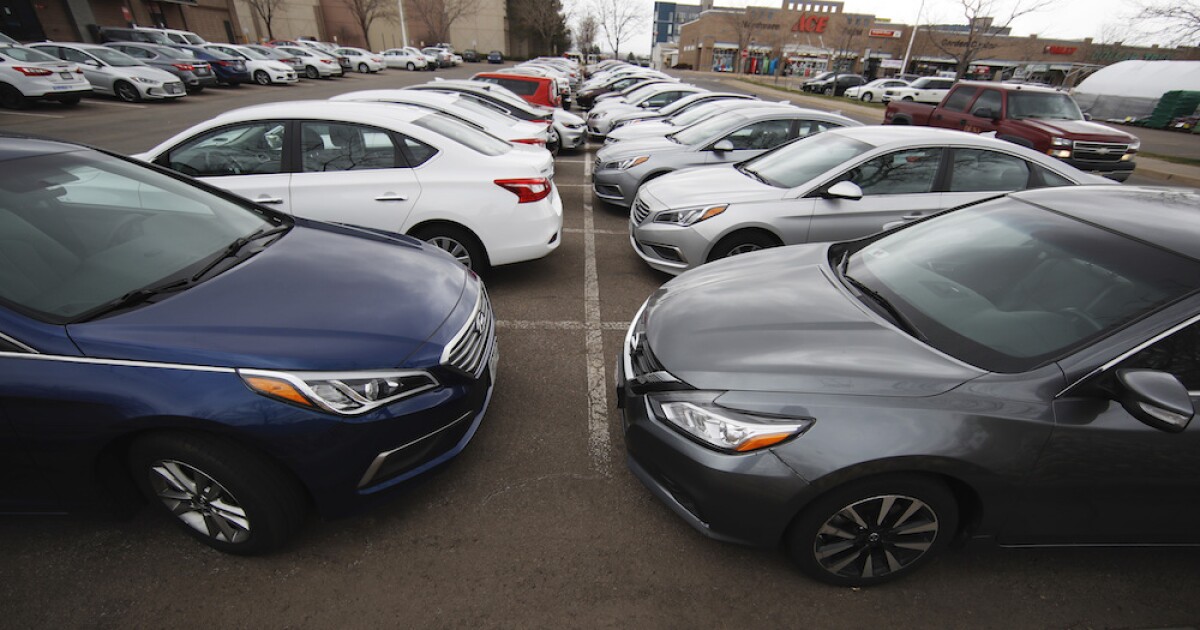Tens of millions getting priced out of new and used cars

WASHINGTON — If you’re in the market for a car, get ready to pay some big money for a new car, or pay dearly for a used car.
The most affluent buyers keep plunking down big money for new vehicles, including the least fuel-efficient among them — trucks, SUVS, large sedans.
As for the rest of America, millions are increasingly priced out of the new-vehicle market. They are competing instead for a shrunken supply of used autos, especially smaller, less expensive ones that consume less fuel. The jump in pump prices since Russia’s invasion of Ukraine has only intensified their urge to keep costs down.
Among all purchases of new autos last month, nearly 79% were trucks and SUVs. A decade ago, that proportion was just 52%. And that’s despite a whopping 22% jump in the average price of a new car since the pandemic struck two years ago — to more than $46,000, as of December.
Based on March prices and interest rates, the monthly payment on an average new vehicle would be $691 — far beyond the reach of what a household with a median gross income of $65,732 should spend, according to calculations by Cox Automotive and Moody’s.
Not so for many of the wealthier-than-average buyers who now dominate the new-vehicle market.
“Those that can afford it are still buying what they want,” said Jeff Schuster, president of global forecasting for LMC Automotive, a consulting firm.
Ivan Drury, a senior manager at the Edmunds.com auto site, has been surprised by the demand among affluent buyers for high-priced new vehicles.
“I can’t imagine a situation in which we’ve had so many people willing to spend so much money,” Drury said. “It’s just abnormal for someone to go out and spend (sticker price) or above. I can’t think of any other time period unless it was on specific models. And this is every car on the road.”
Left largely out of that pool, buyers of more modest means have been vying for the most fuel-efficient used vehicles — and forcing up their prices.
At auctions where dealers buy many of their vehicles, the average price of a 2-to-8-year-old compact car rose 1.1% during the past three weeks to an average of $12,560. That’s an annual rate of nearly 20%. The price of older cars is up even more, according to data compiled by Black Book, which monitors such prices.
By contrast, over the same period, the average for a full-size 2-8-year-old SUV actually fell 2.3%, to $32,700.
“The demand is pushing dealers to buy smaller, more efficient, and older vehicles,” said Alex Yurchenko, chief data officer for Black Book.
Behind that trend lies an economic reality: Americans as a whole have less cash to spend. Although America’s job market is robust and many people have received pay raises in recent months, the acceleration of inflation has more than wiped out those gains in most cases.
Further stressing the lower-priced market is the shrinking availability of leasing, which had long allowed ordinary households to keep monthly payments low. Leasing has nearly dried up because automakers are no longer offering attractive deals.
“They don’t have to,” said Jonathan Smoke, chief economist of Cox Automotive, “because (auto) supplies are low.”
Even among higher-income households, the run-up in gas prices has left more buyers focused on fuel efficiency. In particular, many have been snapping up electric vehicles, whose sales jumped 66% over the past year, Edmunds.com says. Even so, the EV share of the overall auto market remains only about 4%.
In the meantime, prices for both new and used vehicles have begun to fall or level off. From February to March, average prices for used cars and trucks actually fell nearly 4%. That may suggest people have had it and won’t keep paying inflated prices. Automakers have even begun to raise discounts on pickup trucks.







